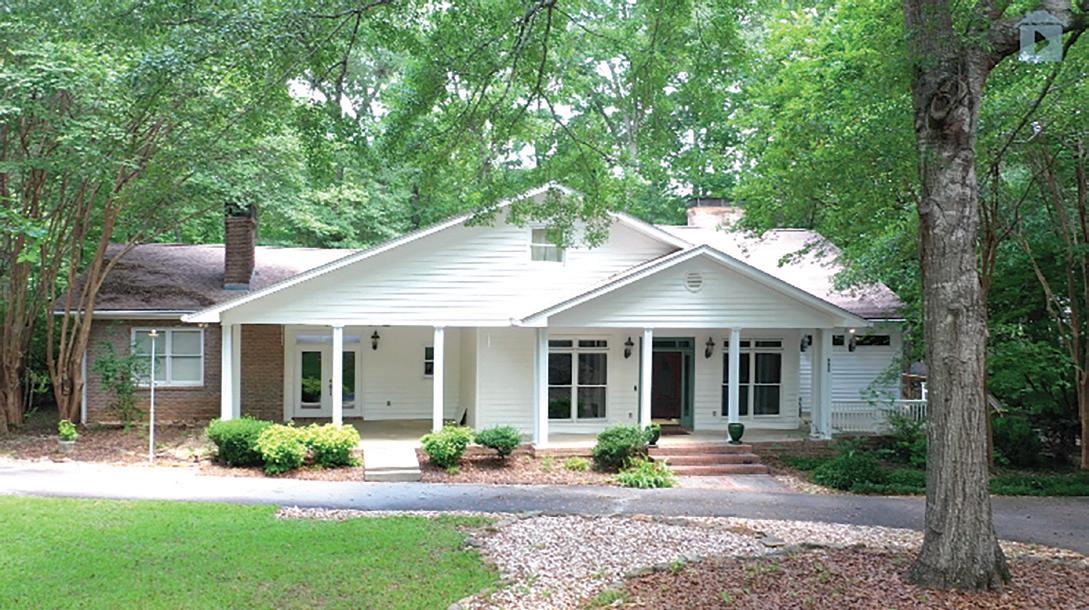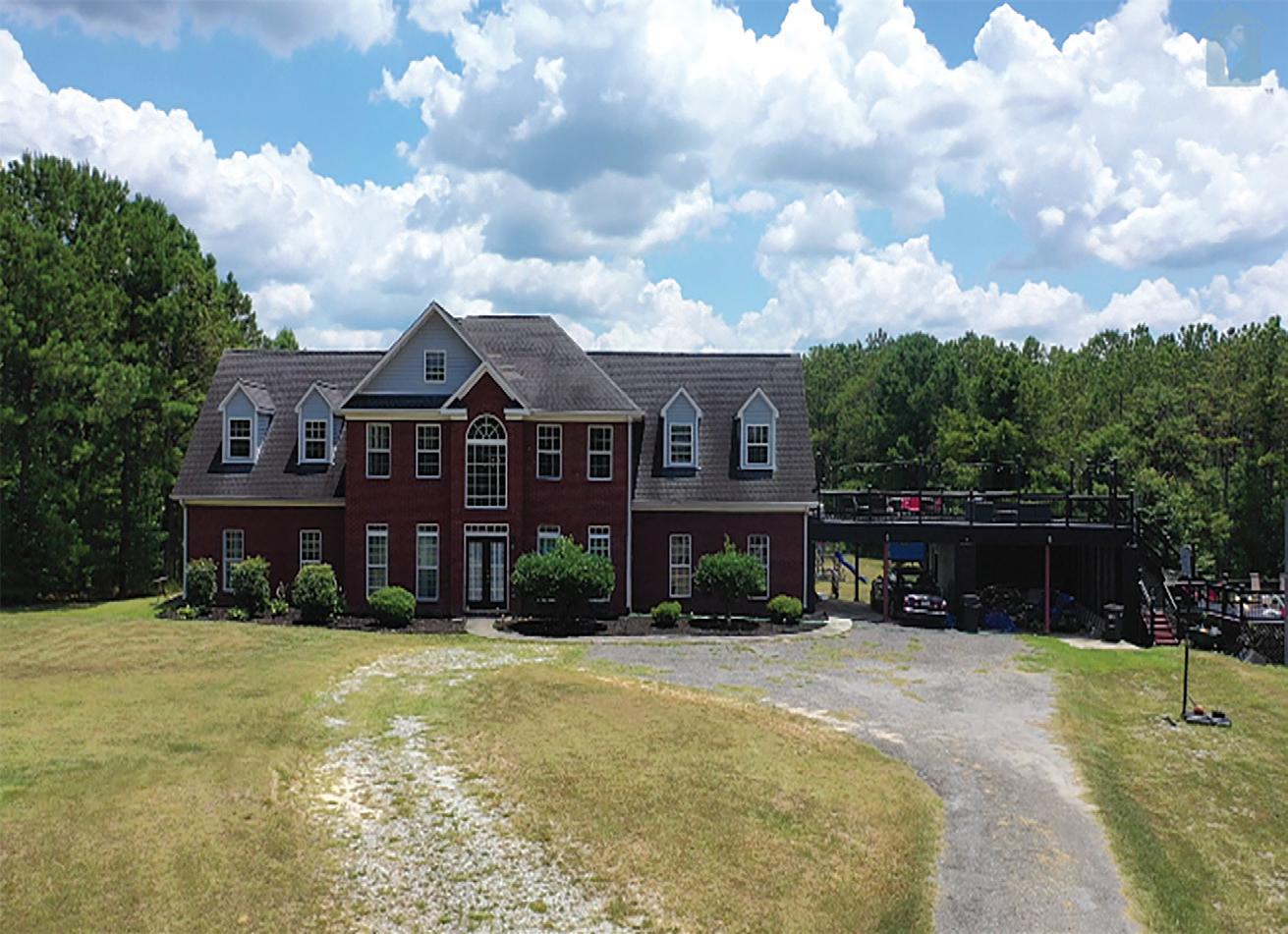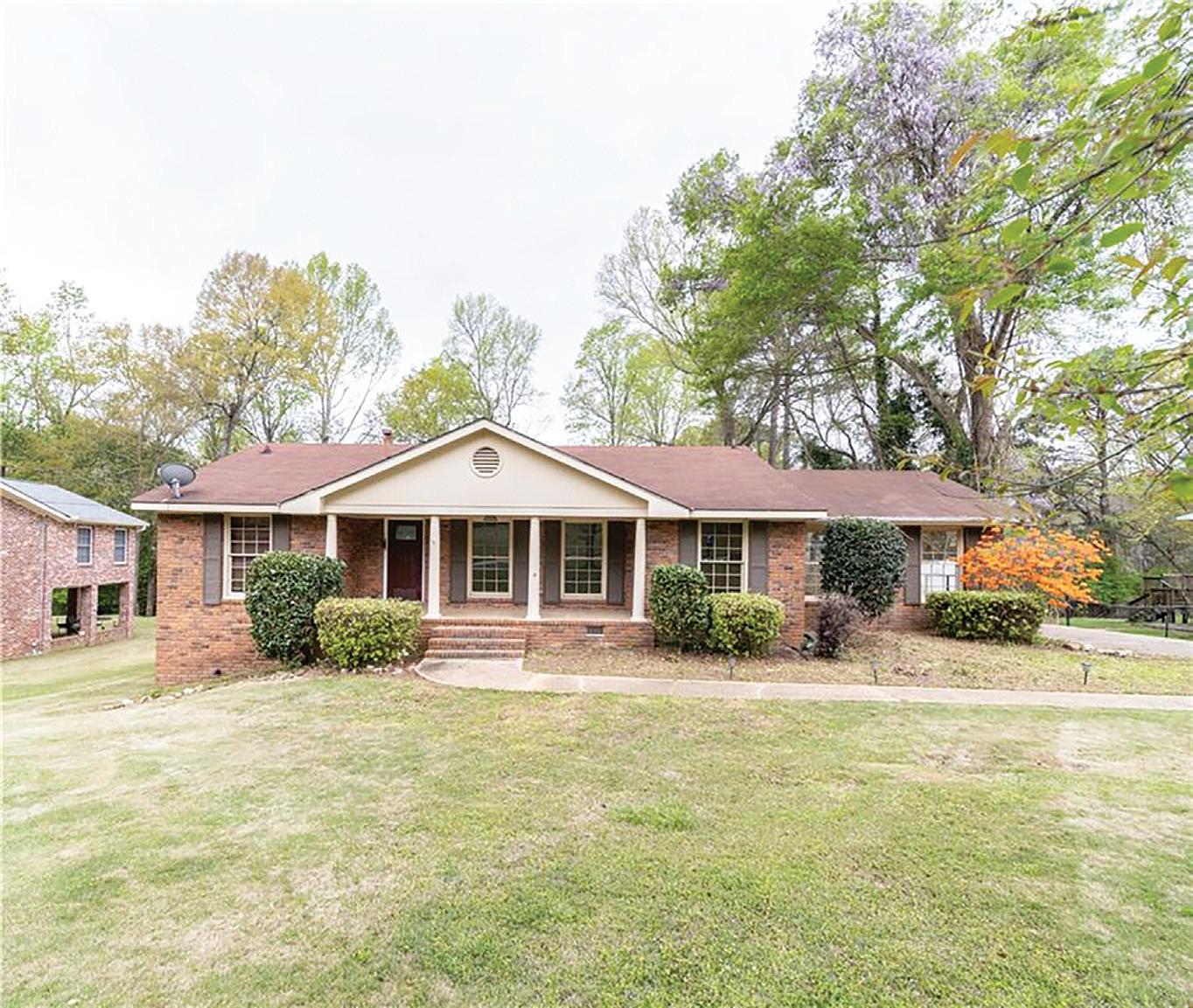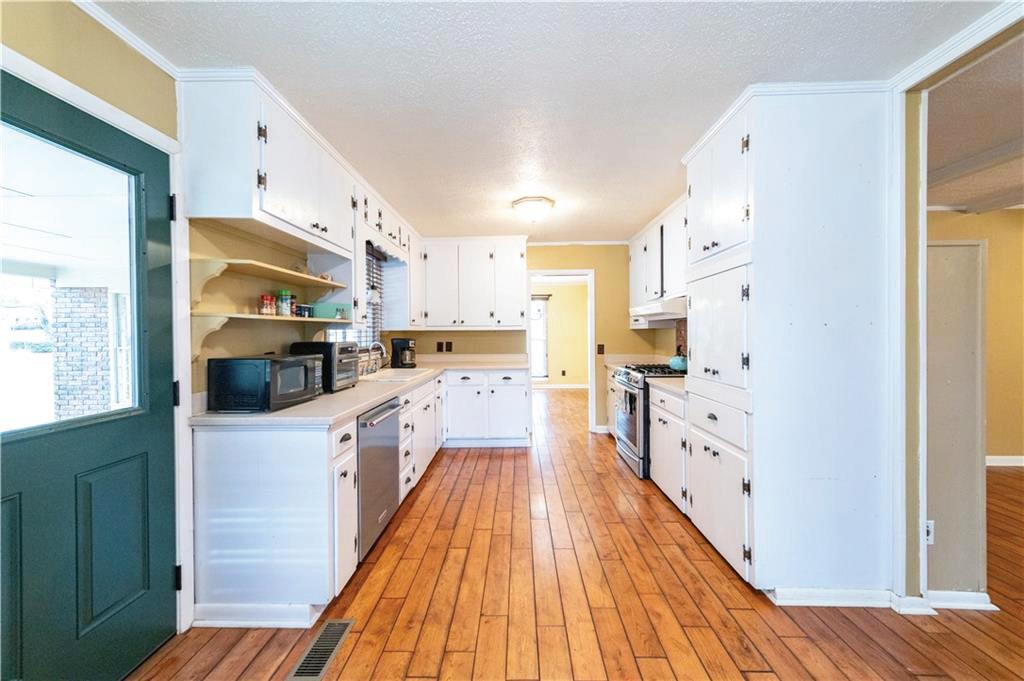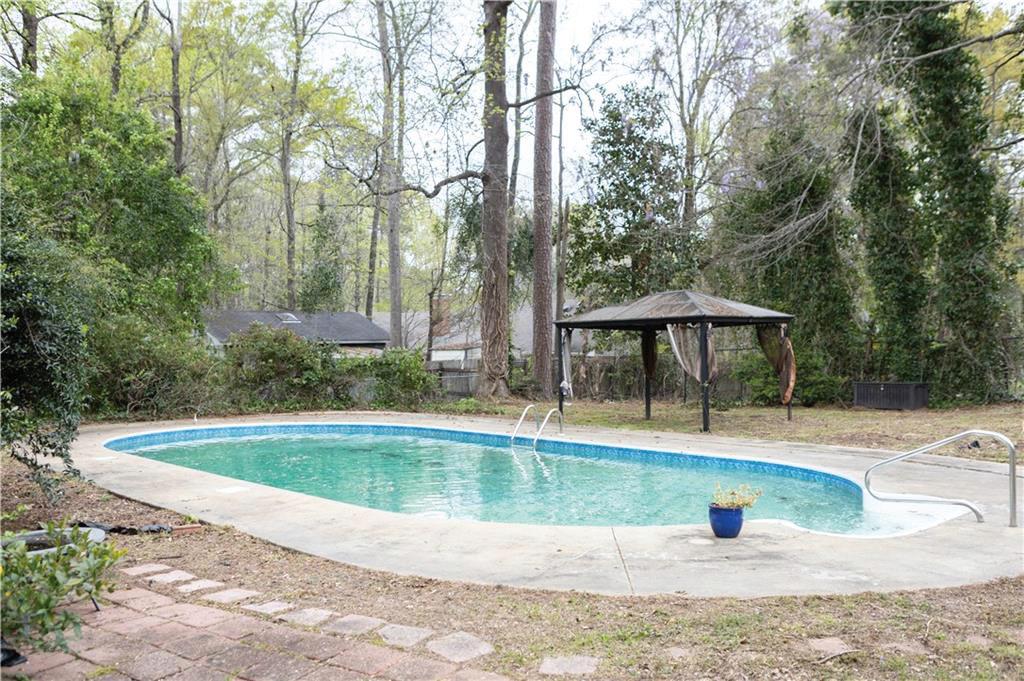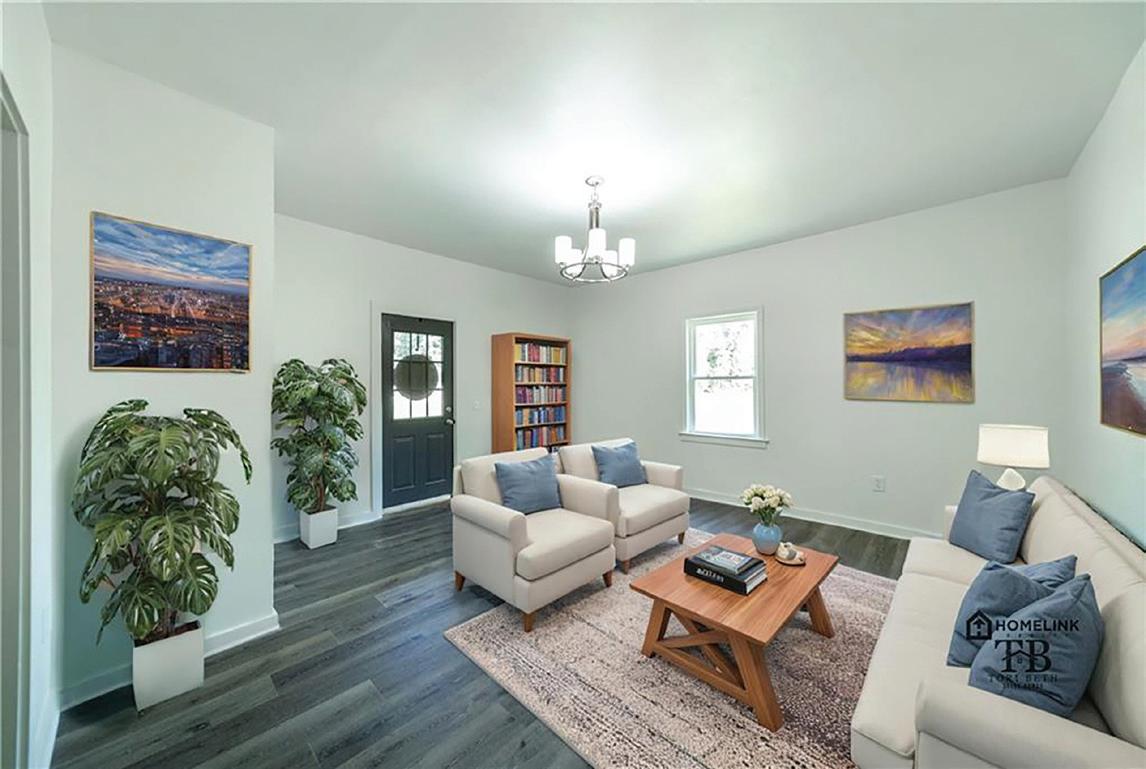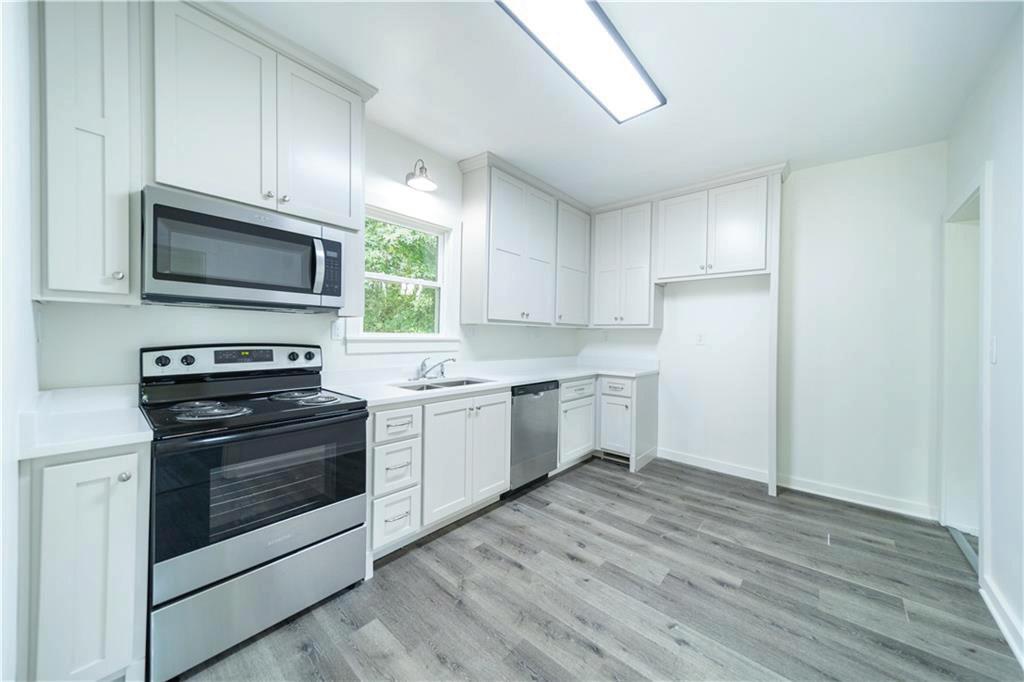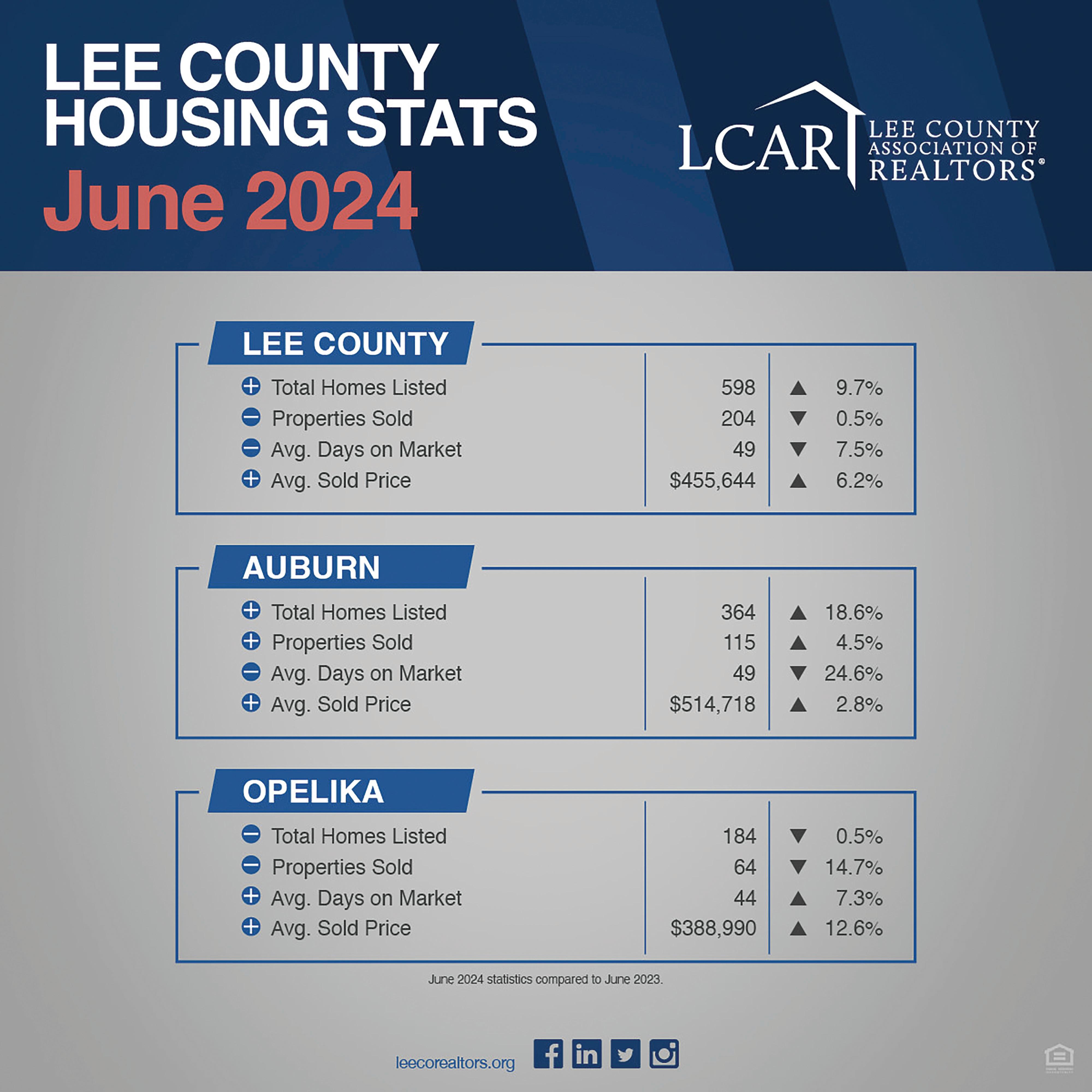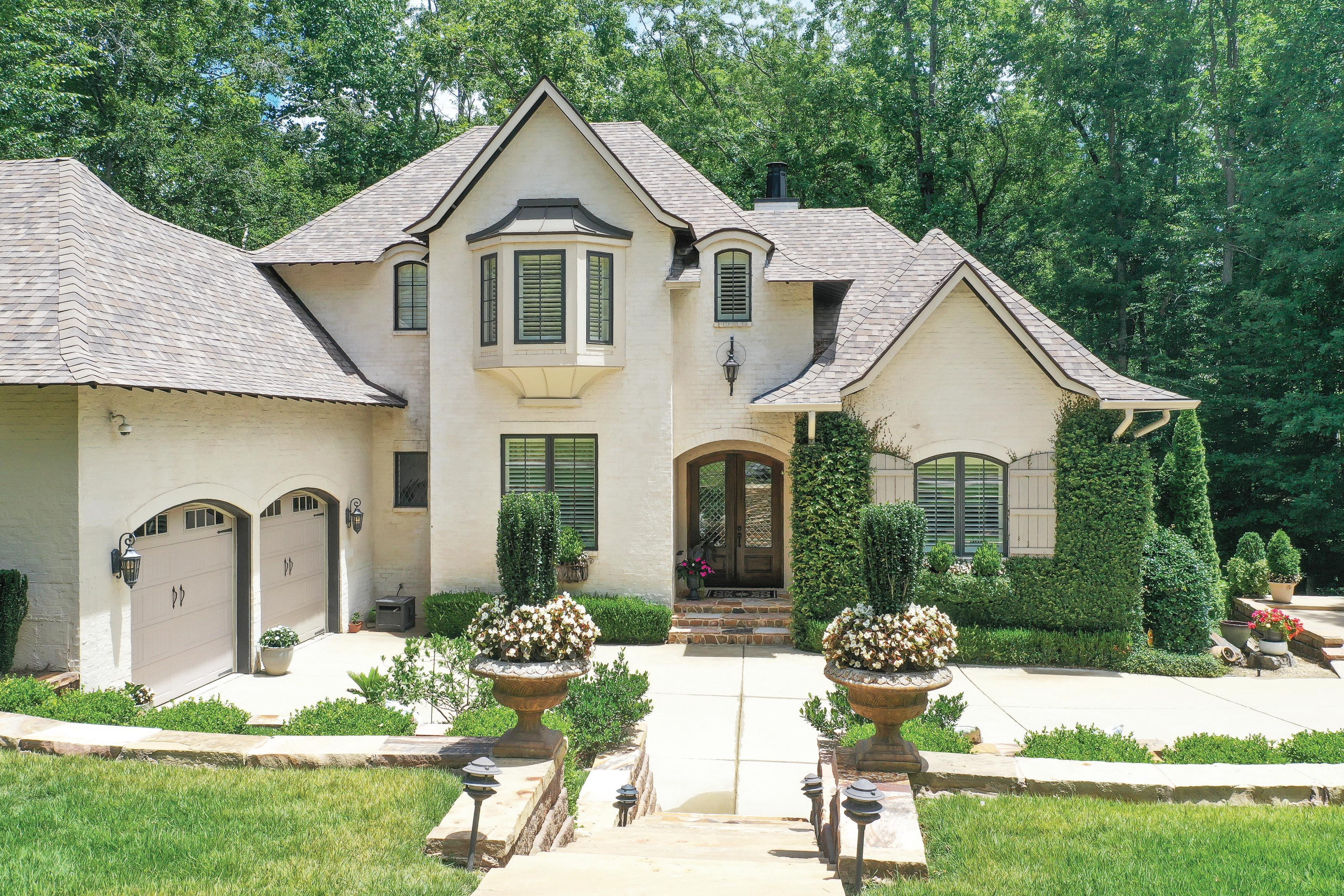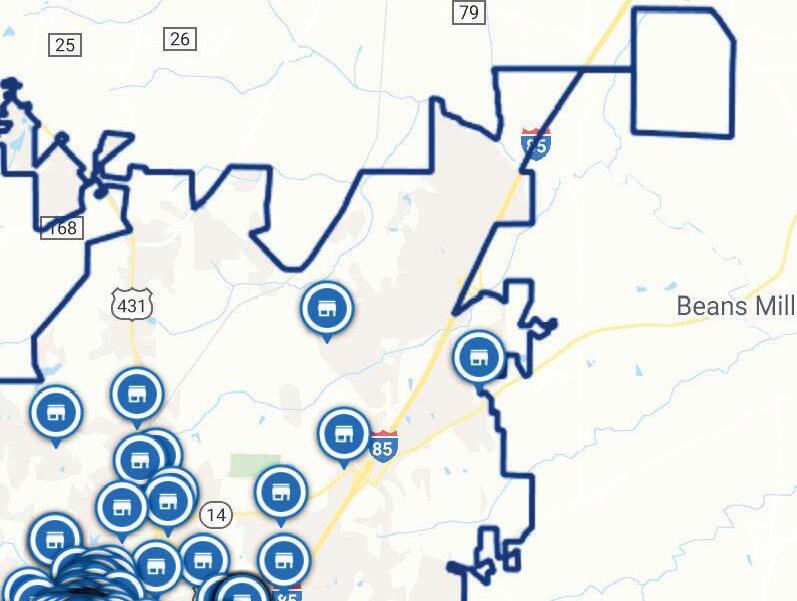Nestled in Northside Opelika. Main Level Features a Formal Living Room, Dining Room, Den, Sunroom, 3 Bedrooms and 2 Bathrooms. Spacious Master Bedroom with Private Bath and Walk-In Closet. Bedroom 2 Has Built-Ins. Guest Bath Has Been Beautifully Updated. Downstairs, the basement offers an additional living space with a bedroom, den, kitchenette, and full bath. Fenced Backyard with an Inground Pool. 2 Car Carport.
Retreat!
Pool! 2802 Society Hill Rd- Welcome to your new home! This beautifully remodeled cottage features 2 Bedrooms and 1 Bath. Covered and new appliances. Large Master Bedroom with 2 Closets. Storage Building. Conveniently located close to downtown Opelika, Tiger Town, and Auburn!
Bedroom, 3 Bath Home! 2805 49th Avenue SW- One-level 4-bedroom, 2-bathroom home with a covered front porch. The living room features a cozy gas spacious laundry room equipped with cabinets and a sink. The master bedroom includes a ceiling fan, built-in desk, two closets, and a private bath. There are three additional bedrooms. Relax on the covered back porch or take a dip in the pool. The property also boasts a 2-car metal carport, a workshop, and a storage building with a roll-up door, all within a privacy fence. Roof & Workshop Roof replaced in 2022. This home has had only one owner!
Cile
15 Simple Energy-Saving Strategies to Lower Your Electric Bill
Energy-e cient home upgrades are not only environmentally responsible, but they can also save you a lot of money over time. Even small updates, such as swapping old lightbulbs for LED versions, can make a huge di erence. And while large-scale changes like replacing windows or adding insulation help reduce energy consumption in the long run, a lot of energy-saving updates can be accomplished in a day or less. Another reason to consider? Many of the energy-e cient renovations you can make to your home qualify for tax credits. Below, see some of the top home improvements for reducing energy consumption and saving on your utility bill.
Buy Energy-E cient Appliances
Major appliances are your home’s third-biggest energy hog, behind heating, cooling, and water heating. Replace outdated appliances with e cient new models. In the long run, replacing old
Dimmers can easily replace a regular switch and keep a low pro le.
Unplug Your Electronics
Leaving gadgets and charger cords plugged in when not in use can account for as much as 10% of a home’s energy use. Simply unplugging what’s not being used can make a big di erence on your energy bills. Instead, plug devices into a power strip that you can switch o when not in use. Remember to unplug what you can when you leave your home as well.
Use Cold Water for Laundry
Do your laundry in cold water. Many of today’s detergents and fabric so eners are much more e cient and don’t necessarily need hot water. Using cold water means you won’t have to waste energy to start up the water heater.
appliances will help your bills and the environment. Energy Starquali ed models have a range of e ciencies, so compare models and go with the most e cient.
Use Occupancy Sensors
Turn o the lights when you leave a room. If that’s di cult for you or your kids to remember, buy lights with occupancy sensors that automatically turn o when there hasn’t been any movement for a period of time. Consider dimmer switches that let you reduce lighting when you don’t need it and have occupancy sensors.
In the summer months, line-dry your laundry instead of using a dryer. Reducing your use of a dryer can save up to $100 a year in operating costs. Plus, line-drying is easier on your clothes, so you save what you would otherwise spend on wear and tear.
Program Your ermostat
Install a programmable thermostat to reduce energy consumption without having to adjust your lifestyle. is allows you to set times for the air-conditioner or furnace to run and won’t waste energy on an empty house. Estimates vary, but you can save about 10% on your energy bill with a smart thermostat.
Turn Down the Temperature
Lower the temperature on your water heater. Most water heaters are set much too high at 140 degrees Fahrenheit. Save energy by turning your water heater down to 120-110 degrees. Don’t worry, the water will still be comfortable.
Change Your Lightbulbs
Replace incandescent bulbs with light-emitting diode (LED) versions. According to Energy.gov, LED lightbulbs use up to 90% less energy and last up to 25 times longer than traditional incandescent bulbs. While more expensive than traditional bulbs upfront, LED lightbulbs save money over time thanks to their long lifespan.
Fill Gaps
Small gaps around windows, doors, and other areas of the house add up. In fact, the EPA estimates that homeowners can save an average of 15% on heating and cooling costs (or an average of 11% on total energy costs) by air sealing their homes and adding insulation in attics, oors over crawl spaces, and basements. Seal gaps and cracks with caulk or weather stripping to keep the cold air out in the winter and the hot air out in the summer.
Schedule a Tune-Up
Dirt can build up over time, causing your HVAC system to perform poorly. If ignored, this can lead to higher energy costs and potentially higher repair costs. Have a licensed professional check your system annually. If your furnace or boiler is more than 15 years old, and your heat pump or air conditioner is more than 12 years old, consider replacing it with a new energye cient model.
Replace Filters
Check your HVAC lter each month and wash or replace it at least every three months. A dirty lter increases your energy bill and shortens the life of your heating and cooling systems.
Fix Air Leaks
ere are probably more air leaks around your home than you think. In addition to caulking and adding weather stripping around windows, close the replace damper when it’s not being used to keep cold air out in the winter and hot air out in the summer. Also, check your dryer vent cap to make sure it closes tightly.
Fix Water Leaks
Check for leaky xtures and appliances, and inspect the pipes under each sink. You should also inspect your washing machine hose and the oor around your water heater for potential leaks. ese could be wasting energy and draining your wallet. Also, test toilets for leaks. Replacing the apper will usually x that problem.
Upgrade Windows
If your home has single-pane windows, they could be wasting up to 25% of your energy costs. Replacing single-pane windows with high-performance double-pane Energy Star-rated windows reduces this energy loss. Look for windows labeled low-emissivity (low-E) or spectrally selective. ey have a coating that reduces thermal heat transfer.
Add Insulation
Most homes are under-insulated, which means heating and cooling systems are forced to work overtime to keep a home comfortable. Add berglass insulation to your attic oor and house walls and save up to 20% on heating and cooling costs.
Utilize the Sun
On cool days, take advantage of the sun’s warmth by opening south-facing window blinds and shades; close them at night. On hot days, block out the sun’s warmth by closing these window treatments.
Professional Photography & Videography services for residential or commercial.
For More Information 334.663.1060 nhtmagazine@gmail.com








